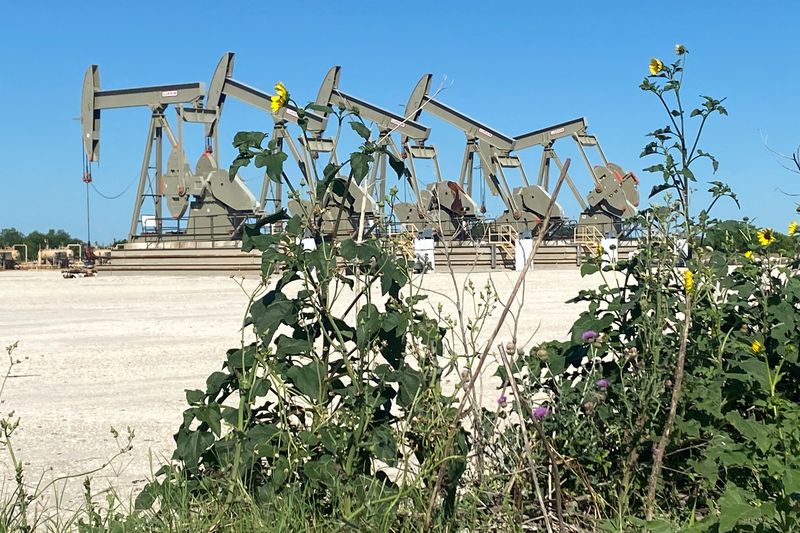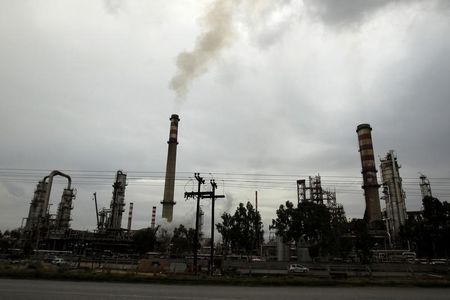Commodities
Australia minister calls on end-consumers to underpin critical minerals investment

Automakers and other consumers of critical minerals should invest in Australia’s materials processing industry to secure ethical long-term supply that can weather geopolitical disruptions, the Australian resources minister said on Tuesday.
One of the world’s biggest suppliers of raw minerals, Australia unfurled a landmark strategy on Tuesday that outlines how it will work with investors and international partners to build a critical minerals processing industry.
Australia is the world’s top supplier of lithium, and a significant producer of rare earths, cobalt, graphite, manganese and other minerals critical to global energy transition. It also produces copper and nickel, key to green energy but which are not classified as critical.
Despite the government offering billions of dollars in cornerstone investments, minerals developers are still struggling to source sufficient financing to build processing plants due to limited interest from commercial lenders wary of price risk and new technologies.
End-users need to fill the gap, Australia Resources Minister Madeleine King told Reuters: “Come invest. We do have the geology and also a stable investment setting in Australia.”
China dominates critical minerals processing, accounting for more than 80% of global rare earths production, and holding large investments in cobalt, lithium and other mining and processing operations in Australia, Africa and South America.
In 2010, China cut exports of rare earths after a dispute with Japan, sparking an international hunt for new deposits. It then ramped up supply, hitting prices and forcing mine developers like Australia’s Lynas to find emergency funding or go out of business all together.
“China does hold that capacity. It can if it chooses to, you know, change the market, if it wants to,” King said.
Rare earths’ magnetic qualities lend them to applications in products from cell phones to electric vehicle batteries to military weaponry, and Australia’s deposits are partly why the United States proposed in May to allow its miners to be treated as domestic suppliers under the U.S. Defence Production Act.
Australia, which offered up another A$500 million ($340 million) under the strategy released on Tuesday, can’t compete with the investment capital unleashed for new energy projects by the U.S. Inflation Reduction Act, but that policy offers other opportunities to attract investment, King said.
Just last month, U.S. lithium giant Albemarle agreed to spend around $1.5 billion to double capacity at its lithium hydroxide processing operations in Western Australia.
Australia’s federal government is now reforming environmental regulations and also working closely with state governments and ministries to streamline permitting, a main industry talking point, King said.
The government can’t scrimp on environmental, social and regulatory standards, however, since ethical, sustainable supply is a key strategic advantage for Australia, King said.
($1 = 1.4721 Australian dollars)
Commodities
Oil set for weekly gain on signs of improving demand

By Shariq Khan
NEW YORK (Reuters) – Oil prices rose in Asian trading hours on Friday, with global benchmark Brent set for its first weekly increase in three weeks on signs of improving global demand and slowing inflation in top oil consumer the United States.
prices rose 21 cents, or 0.3%, to $83.48 a barrel by 0018 GMT. U.S. West Texas Intermediate (WTI) crude futures rose 18 cents, or 0.2%, to $79.41 a barrel.
Brent futures are set to rise about 1% on a weekly basis, and WTI futures are set to gain 1.4%.
Recent declines in oil and refined products inventories at major global trading hubs have created optimism over oil demand growth, reversing a trend of rising stockpiles that had weighed heavily on prices in prior weeks. Through Thursday, Brent crude futures were down around 10% from this year’s peak of $92.18 a barrel on April 12.
U.S. oil and fuel inventories fell last week, while Singapore’s middle distillate fuel stocks dropped to a near three-month low this week. In Europe’s Amsterdam-Rotterdam-Antwerp trading hub, gasoline stocks were down 7.5% in the week to Thursday, data from consultancy Insights Global showed.
Recent economic indicators from the United States have fed into the optimism over global demand. U.S. consumer prices rose less than expected in April, data showed on Wednesday, boosting expectations of lower interest rates in the country.
Those expectations were further bolstered by data on Thursday that showed a stabilizing U.S. job market.
remove ads
.
Lower interest rates could help soften the U.S. dollar, which would make oil cheaper for investors holding other currencies and drive demand.
“Financial markets now have placed the most bets on a September interest rate cut by the Federal Reserve, which would continue to temper the dollar strength and shift that strength over to commodities and equities,” StoneX oil analyst Alex Hodes said on Thursday.
Commodities
Goldman Sachs discusses what’s next for natural gas prices

Over the past three weeks, US prices have surged 30% to above $2.50 per million British thermal units (mm/BTU), fueled by production declines and increased feedgas demand for liquified natural gas (LNG) exports.
Moreover, recent producer cuts, maintenance events, and Freeport LNG’s normalization of gas demand post-outage have contributed to this rise. Cheniere’s announcement of no heavy maintenance for its liquefaction trains this year also supports higher prices.
In a Thursday note, Goldman Sachs strategists said the return of gas prices above $2/mmBtu aligns with their expectations, as production curtailments “would ultimately lead to lower storage congestion risks for this summer.”
“That said, we see only limited further upside from current levels, with stronger gas prices risking a return of congestion concerns,” they added.
Goldman notes that prices above $2/mmBtu reduce gas competitiveness compared to coal, with a $0.50/mmBtu increase potentially cutting gas demand by 1 billion cubic feet per day (Bcf/d), especially in shoulder months.
Moreover, higher prices may prompt the restart of previously shut-in wells. EQT (ST:), the largest producer in the Appalachia region, indicated it would resume production if prices sustainably exceed $1.50/mmBtu. And while Appalachia prices haven’t risen as much as NYMEX, the local hub has averaged $1.44/mmBtu month-to-date, up 10¢ from last month, strategists highlighted.
Elsewhere, European gas prices have also risen this summer, though less sharply than in the US.
Title Transfer Facility (TTF) prices increased 18% over the past three months to around 30 euros per megawatt-hour (MWh), holding steady in May.
remove ads
.
However, unlike the US market, this rally lacks fundamental support, with Northwest (NW) European gas storage at record-high levels, Goldman strategists pointed out.
“To be sure, NW European LNG imports have remained weak relative to last year – and are likely to get weaker in the coming weeks owing to a seasonal decline in global LNG production, exacerbated by outages at Australia’s Gorgon export project,” they said.
“Going forward, we expect healthy non-European demand for LNG to continue to incentivize a decline in European LNG imports vs last year,” they continued.
Commodities
Gold prices trim some weekly gains on tempered rate cut hopes

Investing.com– Gold prices fell slightly on Friday, trimming some of their gains for the week as comments from a slew of Federal Reserve officials offered a more sobering outlook on interest rate cuts.
The yellow metal had risen to nearly $2,400 an ounce this week in the immediate aftermath of some soft U.S. economic readings. But it pulled back from these levels on Thursday and Friday.
steadied at $2,377.40 an ounce, while expiring in June fell slightly to $2,381.10 an ounce by 00:19 ET (04:19 GMT).
Gold retreats as Fed officials downplay rate cuts, but weekly gains due
The yellow metal fell on Thursday after a string of Fed officials cautioned against bets on immediate reductions in interest rates.
Several members of the central bank’s rate setting committee said the central bank will need much more convincing that inflation was coming down beyond a marginally soft inflation reading for April.
This saw traders begin pricing out some expectations for a rate cut in September. The and also rebounded from earlier losses this week.
Still, some softer-than-expected readings put gold on course for a 0.7% weekly gain.
The yellow metal was also in sight of a record high of above $2,430 an ounce, although it appeared unlikely the level would be met in the near-term.
Other precious metals retreated on Friday, but were set for bumper weekly gains. fell 0.2% but were trading up 6.2% for the week, while fell 0.4% but were up 4.5% this week.
remove ads
.
Copper mixed amid middling China cues
Among industrial metals, one-month copper futures tumbled from two-year highs tracking middling economic data. But three-month copper futures pushed higher and were set for a stellar week as markets bet on tighter supplies and an eventual demand recovery in the coming months.
on the London Metal Exchange rose 0.6% to $10,445.0 a ton, while rose 0.3% to $4.8935 a pound.
Data from China on Friday painted a mixed picture of the economy. While grew more than expected, growth slowed and shrank at an accelerated pace. Growth in Chinese also slowed.
The readings presented a muddled outlook for the world’s biggest copper importer, as it rolled out more stimulus measures to shore up growth.
Three-month copper futures gained on the prospect of a demand recovery, and were up nearly 4% this week. They were also at two-year highs.

 Forex2 years ago
Forex2 years agoForex Today: the dollar is gaining strength amid gloomy sentiment at the start of the Fed’s week

 Forex2 years ago
Forex2 years agoHow is the Australian dollar doing today?

 Forex1 year ago
Forex1 year agoUnbiased review of Pocket Option broker

 Forex2 years ago
Forex2 years agoDollar to pound sterling exchange rate today: Pound plummeted to its lowest since 1985

 Cryptocurrency2 years ago
Cryptocurrency2 years agoWhat happened in the crypto market – current events today

 World2 years ago
World2 years agoWhy are modern video games an art form?

 Stock Markets2 years ago
Stock Markets2 years agoMorgan Stanley: bear market rally to continue

 Economy2 years ago
Economy2 years agoCrude oil tankers double in price due to EU anti-Russian sanctions

































